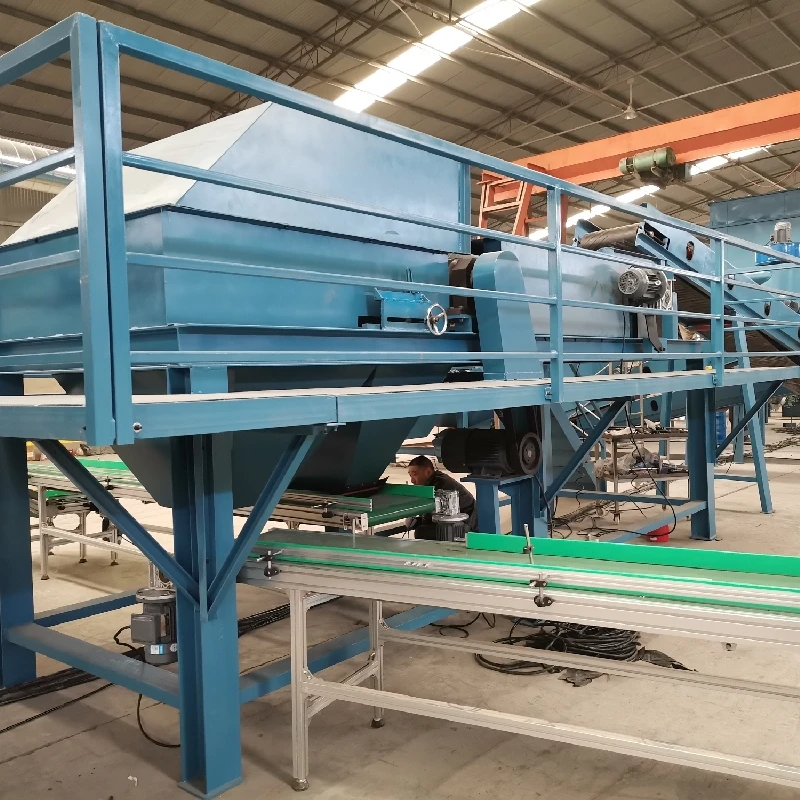

Nov . 07, 2024 07:31 Back to list
How to Build an Eddy Current Separator
Eddy current separators are widely used in the recycling industry for their ability to separate non-ferrous metals from waste materials, such as aluminum, copper, and brass. The principle behind their operation is based on the generation of eddy currents in conductive materials when exposed to a changing magnetic field. This article outlines the steps to build a basic eddy current separator, including the necessary components, construction techniques, and operational considerations.
Components Required
1. Magnetic Drum A rotating drum made of magnetic material is central to the design. It should be capable of creating a strong magnetic field to induce eddy currents in the non-ferrous metals. 2. Conveyor Belt A belt system is needed to transport the material towards the magnetic drum. The belt should be wide enough to handle the intended load and designed to withstand wear.
3. Drive Motor A motor is necessary to drive the conveyor belt and the magnetic drum. The motor should be powerful enough to handle the weight of the materials being processed.
4. Control System An electrical control system is essential for managing the operation of the motor speed and the overall functioning of the separator.
5. Frame and Base A sturdy frame is required to support the drum, motor, and conveyor. Ideally, this should be made from durable materials like steel to ensure longevity.
6. Feed Hopper A feed hopper will allow for the controlled entry of materials onto the conveyor belt. It should be designed to prevent blockages and ensure a steady flow of material.
Construction Steps
1. Design and Planning Start by designing the layout of the eddy current separator. Consider the size of the magnetic drum, conveyor belt dimensions, and overall footprint of the unit. Sketch the design and make a list of all required materials and components.
2. Building the Frame Construct the frame using steel or another durable material. The frame should be robust enough to support the weight of the drum and materials. Ensure that the frame is level to avoid operational issues.

3. Installing the Magnetic Drum Mount the magnetic drum securely on the frame. It should be positioned parallel to the conveyor belt and at a height that allows for optimal material flow. The drum must rotate smoothly, so ensure it’s mounted on bearings for easy rotation.
4. Setting Up the Conveyor Belt Install the conveyor belt system adjacent to the magnetic drum. The belt should be aligned with the drum to allow materials to fall directly onto the drum surface. Adjust the tension of the belt to minimize slippage and wear.
5. Connecting the Drive Motor Mount the drive motor on the frame and connect it to both the conveyor belt and the magnetic drum. Use pulleys and belts as necessary to transfer motion efficiently. Ensure that the motor's power rating aligns with the requirements of the system.
6. Installing the Control System Set up an electrical control system to manage the motor operation. This system should allow for adjustments in speed and provide safety features, such as overload protection.
7. Adding the Feed Hopper Position and secure the feed hopper above the conveyor belt. Ensure it allows for a smooth and consistent flow of materials onto the belt.
8. Testing and Calibration Once assembled, conduct tests to confirm that all components function correctly. Calibrate the system to optimize the separation of non-ferrous metals. Adjust the speed of the conveyor belt and the drum as necessary for optimal performance.
Operational Considerations
- Material Flow Ensure a consistent flow of materials onto the conveyor belt to maximize the efficiency of the separation process. - Maintenance Regularly check and maintain the motor, bearings, and belts to ensure reliable operation. Clean the magnetic drum frequently to remove any build-up of materials.
- Safety Precautions Implement safety measures, including emergency stop buttons and protective guards around moving parts to prevent accidents.
Conclusion
Building an eddy current separator requires careful planning and an understanding of the principles behind its operation. By following the steps outlined above, you can create a functional separator capable of effectively distinguishing non-ferrous metals from mixed waste, ultimately contributing to more sustainable recycling practices.
Latest news
Troubleshooting Common Eddy Separator Problems
NewsJul.04,2025
The Role of Metal Recycling Plants in Circular Economy
NewsJul.04,2025
The Impact of Recycling Line Pickers on Waste Management Costs
NewsJul.04,2025
Safety Features Every Metal Shredder Should Have
NewsJul.04,2025
How Industrial Shredders Improve Waste Management Systems
NewsJul.04,2025
How Cable Granulators Contribute to Sustainable Recycling
NewsJul.04,2025